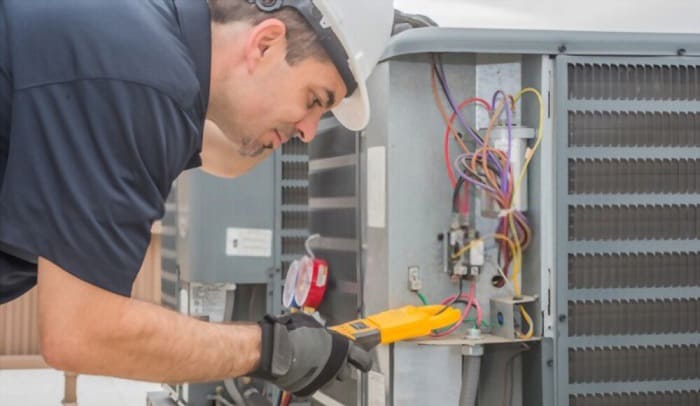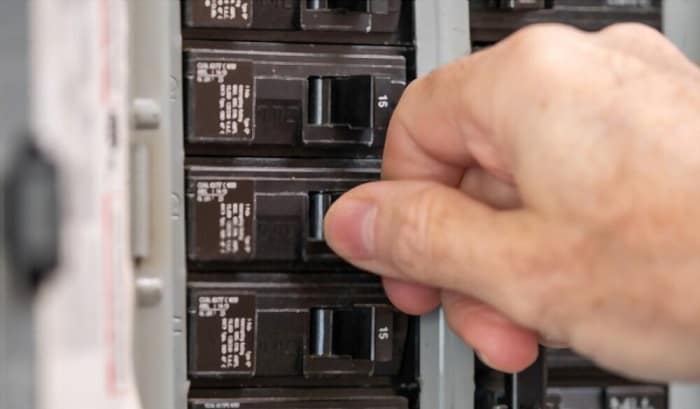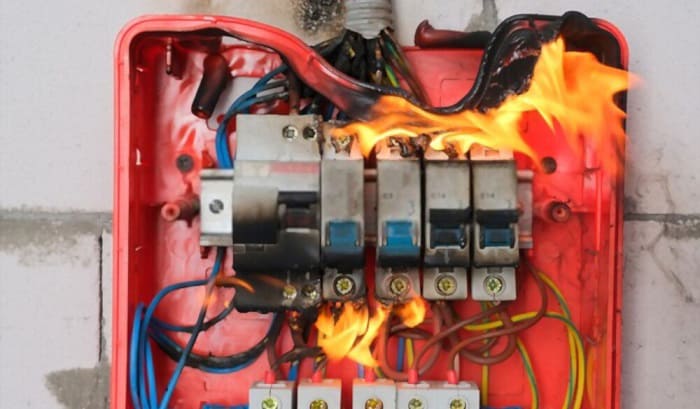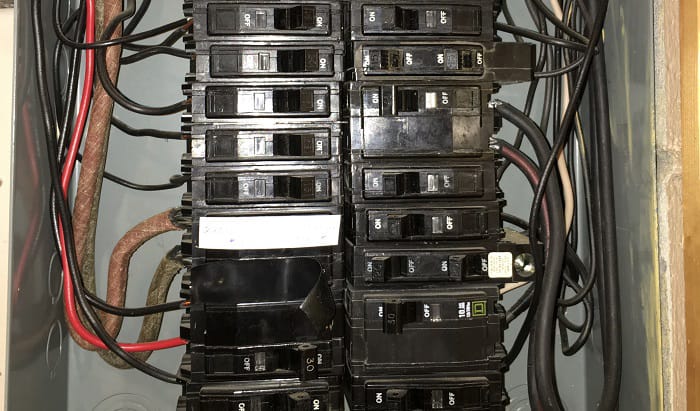Circuit breakers and fuses are necessary when designing electrical systems. These handy devices allow safe levels of electrical energy to flow to our homes at their nominal voltages by protecting us during a current surge or overdraw.
Two factors are considered when buying these devices: the interrupting rating and the short circuit rating. These two terms are often interchanged but knowing the difference between interrupting rating vs short circuit rating helps make planning electrical installations better and up-to-code.
Table of Contents
What is Interrupting Rating?
Circuit breakers and fuses are commonly rated for two things.
- The first and the most obvious rating is the current rating that they can trip under normal current flow such as the commonly used 15-amp and 20-amp breakers. This rating is the lowest current that the breaker can trip without substantial damage to it.
- The second rating is the not-so-obvious rating that can be seen in small print on the breaker or fuse.
This is the interrupting rating, and the 2023 version of the NFPA 70, also known as the National Electric Code or NEC, gives the definition of the interrupting rating in Article 100 as the highest current that a device is identified to interrupt at a rated voltage under standard test conditions.
Other terms people commonly used to refer to interrupting rating are current interrupting rating, interrupting current rating, or circuit breaker interrupt rating.
However, in publications, it may be referred to as the available interrupting capacity (AIC) or the ampere interrupting rating (AIR). Interrupting rating uses units of Amps RMS Symmetrical.
For instance, some 15-amp or 20-amp moulded case circuit breakers, or MCCBs, have an interrupting rating of 10k amps, meaning, these MCCBs can trip up to 10,000 amps of current before malfunctioning.
This rating is important especially during a fault current or short circuit current where a huge amount of current can flow through the circuit.
If the interrupting rating of the circuit breaker is not exceeded, the breaker can still trip safely and stop the fault current.
However, if the interrupting rating is exceeded, the breaker might get fatally damaged and might not trip at all, and worst, might even explode.
What is Short Circuit Rating?
While interrupting rating is used for circuit breakers, fuses and other overcurrent protection devices, a different term is used for equipment and loads.
Electrical systems and equipment can use a lot of circuit breakers or fuses built into them that have different interrupting ratings, so instead, the short circuit rating, formally known as the short circuit current rating, or SCCR, is used for equipment.
The 2023 version of the NFPA 70, Article 100, defines the SCCR. It is the maximum calculated fault current that equipment or systems can be connected to at a certain voltage without sustaining damage based on certain criteria. It used to be called the “withstand rating” that shows how much short circuit equipment can tolerate.
Differences Between Air and SCCR
1. Use
- AIR is used for overcurrent protection devices and shows the maximum fault current circuit breakers can still trip or function.
- SCCR is used for equipment and shows the maximum fault current equipment can withstand.
2. Method of determination
- AIR is determined using standard tests for fuses or breakers like the one of MCCB units. Manufacturers provide this.
- SCCR is calculated by an engineer to give out the IEC standard short-circuit ratings during the setup of the electrical system.
Frequently asked questions
Is AIC the same as short circuit rating?
No, they are not the same. A lot of confusion comes from different individuals interchanging the two terms or mixing up the terms like short circuit interrupt rating or short circuit interrupting rating.
AIC or now known as AIR is for overcurrent protection devices. Short circuit rating, or formally known as short circuit current rating, is used for equipment or electrical systems.
What is interrupting rating in electrical?
It is the highest current that an overcurrent protection device is identified to interrupt at a rated voltage under standard test conditions.
Can I change the SCCR rating of an electrical system by myself?
Always ask an engineer to determine the SCCR rating of an electrical system so the system will remain up-to-code. It is calculated based on several factors, including the AIRs of the circuit breakers or fuses in the system.
Conclusion
Comparing interrupting rating vs short circuit rating can be very confusing since the two terms seem interchangeable. The definitions provided by the NFPA 70 for both terms seem similar in a lot of aspects.
However, knowing that interrupting rating is for overcurrent protection devices and short circuit rating is for equipment or systems makes it less complicated, and makes electrical planning easier and more standardized across the board. Always remember to consult an engineer regarding your short circuit concerns.
Related: Understanding Circuit Breaker Ratings and Its Specification

I am Edwin Jones, in charge of designing content for Galvinpower. I aspire to use my experiences in marketing to create reliable and necessary information to help our readers. It has been fun to work with Andrew and apply his incredible knowledge to our content.




